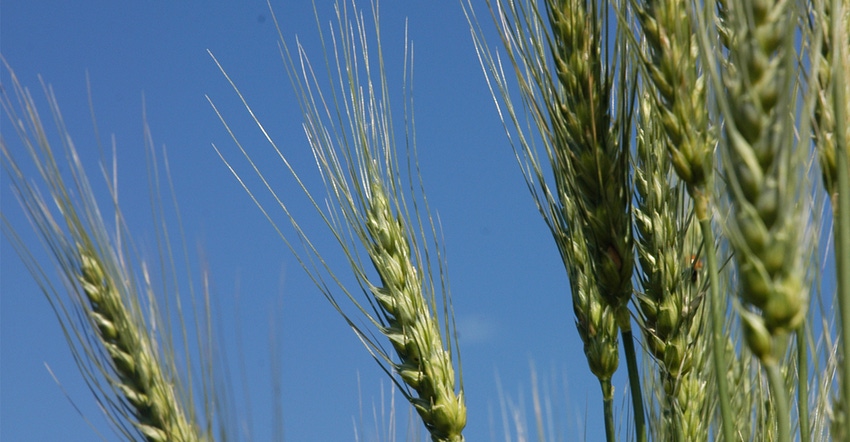May 22, 2018

To get an estimate of wheat yields after wheat heads develop, Joel Ransom, North Dakota State University Extension agronomist, suggests using the Wheat Quality Council’s formula. It consists of the following five steps:
1. Count the number of spikes in a three-foot length of row. Do not count small heads that will not significantly contribute to yield. If the crop was air seeded in bands or paired rows, count the number of spikes from the entire width of the band, or both rows in the pair.
2. Count the number of spikelets in six or more randomly selected spikes. Omit the top and bottom spikelets because they contribute little to yield.
3. Determine the number of kernels per spikelet by hand threshing the head, counting the number of kernels, and dividing the number of kernels by the number of spikelets. Although this step will provide you with the most accurate estimate of kernels per spikelet, in most cases using 2.3 kernels per spikelet will be accurate enough to generally allow for a reasonable estimate of yield. Unless the crop has experienced stress, in which case then use 2.1 kernels per spikelet.
4. Estimate the weight of the kernels. Since kernel weight cannot be precisely determined until harvest, the Wheat Quality Council has used a conversion factor of 0.142 to estimate kernel weight prior to harvest. The value 0.142 is a constant that incorporates kernel weight and other unit conversion factors.
5. Determine the row spacing by measuring the distance between several rows or bands of wheat. Most double disc drills are set at 6-, 7- or 8-inch row spacing. The width of air seeded bands can vary significantly. To determine the row spacing of the bands, measure the distance between the edge of one band to the same edge of the adjacent band.
The formula
Multiply the average numbers of spikes in three foot of row by the average number of spikelets per spike by the average number of kernels per spike by the kernel weight factor of 0.142 and divide the answer by the row width spacing.
Here's three examples of how it works for fields with 7-inch row spacing:
• 113 spikes in three-foot of row times 15.3 spikelets per spike (remember this number is the average spikelet counts from at least six spikes) times 2.3 kernels per spike times 0.142 (the kernel weight factor) divided by 7 (the row inch row spacing) equals 81 bushels per acre.
• (94 spikes in three-foot row times 14.3 spikelets per spike times 2.3 kernels per spike times 0.142 (the kernel weight factor) divided by 7 (the row spacing) equals 63 bushels per acre
• 93 spikes in three-foot of row times 12.3 spikelets per spike times 2.1 kernels per spike times 0.142 (the kernel weight factor) divided by 7 (the row spacing) equals 48 bushels acre. The factor of 2.1 kernels per spike rather than 2.3 was used due to stress on the plants.
Multiple locations within a field.
Be sure to do count in many different parts of the field. Small differences in the numbers can make large differences in the yield estimate.
Source: North Dakota Crop and Pest Report
You May Also Like




